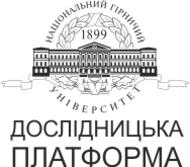№78-4
Utilization of carbon dioxide during borehole underground coal gasification
P. Saik1, V. Falshtynskyi1
1Dnipro University of Technology, Dnipro, Ukraine
Coll.res.pap.nat.min.univ. 2024, 78:39–50
Full text (PDF)
https://doi.org/10.33271/crpnmu/78.039
ABSTRACT
Purpose. To develop an innovative approach for carbon dioxide utilization during the borehole underground gasification of coal at the SE “Lvivvuhillia”.
Methods. The determination of stratification cavity parameters in the rock mass during underground coal gasification was based on analytical studies. These studies employed the method of stress-strain state calculation of rock layers implemented in the “GeoDynamics Lite” software. This method involves obtaining geometric and physical distribution parameters for characteristic rock layers from the coal seam to the surface. Input data for the research included data on the geological and mining conditions of coal seams and the technological parameters of the mining operations.
Findings. Analysis of the rock layers’ geometric and physical load parameters confirmed the expansion of abnormal pressure zones in the rock mass. It was established that these parameters change from the coal seam to the surface, both toward the rock mass and in the direction of the gasified cavity as the combustion face advances. These dynamic changes in the roof structure promote the formation of stratification cavities, which can be used as localized sites for efficient carbon dioxide sequestration.
Originality. The dependencies of changes in the dimensions of stratification cavities in the rocks of roof above an underground gasifier on the rate of combustible face advance have been established. Taking this dependency into account allows for predicting the degree of carbon dioxide utilization in technologically created cavities.
Practical implications. For the Chervonohrad mine, the parameters of stratification cavities within the rock mass at seams n7n, n7 and n7v levels during the gasification of seam n7n were determined. These findings allow for the assessment of carbon dioxide utilization volumes in the future.
Keywords: underground coal gasification, carbon dioxide, rock mass, coal seam, stratification cavities.
References
1. Zhen, D. O. N. G., Yanpeng, C. H. E. N., Lingfeng, K. O. N. G., Feng, W. A. N. G., Hao, C. H. E. N., Junjie, X. U. E., ... & Xinggang, W. A. N. G. (2024). Underground coal gasification: Overview of field tests and suggestions for industrialization. Coal Geology & Exploration, 52(2), 180–196.
2. Saik, P., Lozynskyi, V., Anisimov, O., Akimov, O., Kozhantov, A., & Mamaykin, O. (2023). Managing the process of underground coal gasification. Naukovyi Visnyk Natsionalnoho Hirnychoho Universytetu, 6, 25–30. https://doi.org/10.33271/nvngu/2023-6/025
3. Abbasi, K. R., Zhang, Q., Alotaibi, B. S., Abuhussain, M. A., & Alvarado, R. (2024). Toward sustainable development goals 7 and 13: A comprehensive policy framework to combat climate change. Environmental Impact Assessment Review, 105, 107415. https://doi.org/10.1016/j.eiar.2024.107415
4. Aldy, J. E., & Halem, Z. (2022). The Evolving Role of Greenhouse Gas Emission Offsets in Combating Climate Change. SSRN Electronic Journal. https://doi.org/10.2139/ssrn.4203782
5. Viazovyk, V., Pochynok, V., & Shynkarenko, D. (2021). Classification of carbon dioxide utilization technologies in the conditions of a closed cycle economy. Visnyk Cherkaskoho Derzhavnoho Tekhnolohichnoho Universytetu, 82–107. https://doi.org/10.24025/2306-4412.2.2021.227052
6. Chen, H., Qin, Y., Chen, Y., Dong, Z., Xue, J., Chen, S., Zhang, M., & Zhao, Y. (2023). Quantitative Evaluation of Underground Coal Gasification Based on a CO2 Gasification Agent. Energies, 16(19), 6993. https://doi.org/10.3390/en16196993
7. Duan, T.-H., Lu, C.-P., Xiong, S., Fu, Z.-B., & Chen, Y.-Z. (2016). Pyrolysis and gasification modelling of underground coal gasification and the optimisation of CO2 as a gasification agent. Fuel, 183, 557–567. https://doi.org/10.1016/j.fuel.2016.06.118
8. Matkivskyi, C.V. (2022). Uzahalnennia osnovnykh doslidzhen z ulovliuvannia ta zberihannia dioksydu vuhletsiu v ramkakh dekarbonizatsii enerhetychnoho sektoru Ukrainy.Oil and Gas Power Engineering, 2(38), 35–50. https://doi.org/10.31471/1993-9868-2022-2(38)-35-50
9. Lozynskyi, V., Dychkovskyi, R., Saik, P., & Falshtynskyi, V. (2018). Coal Seam Gasification in Faulting Zones (Heat and Mass Balance Study). Solid State Phenomena, (277), 66–79. https://doi.org/10.4028/www.scientific.net/SSP.277.66
10. Dychkovskyi, R.O., Lozynskyi, V.H., Saik, P.B., Petlovanyi, M.V., Malanchuk, Ye.Z., & Malanchuk, Z.R. (2018). Modeling of the disjunctive geological fault influence on the exploitation wells stability during underground coal gasification. Archives of Civil and Mechanical Engineering, 18(4), 1183–1197. https://doi.org/10.1016/j.acme.2018.01.012
11. Lozynskyi, V.H. (2015). Metodyka vyznachennia dotsilnosti zastosuvannia tekhnolohii sverdlovynnoi pidzemnoi hazyfikatsii vuhillia na osnovi rozrakhunku koefitsiienta ekonomichnoi efektyvnosti. Zbirnyk naukovykh prats NHU, (48), 52–61.
12. Falshtynskyi, V., Saik, P., Dychkovskyi, R., Lozynskyi, V., & Demydov, M. (2022). Aspects for implementing the cumulative energy systems during underground coal gasification. Collection of Research Papers of the National Mining University, 69, 94–104. https://doi.org/10.33271/crpnmu/69.094
13. Su, F., Zhang, T., Wu, J., Deng, Q., Hamanaka, A., Yu, Y., Dai, M., He, X., & Yang, J. (2022). Energy recovery evaluation and temperature field research of underground coal gasification under different oxygen concentrations. Fuel, 329, 125389. https://doi.org/10.1016/j.fuel.2022.125389
14. Qin, Y., Xu, N., Chen, W., & Wu, L. (2023). Experimental Study on the Effect of High Temperature on the Physical and Mechanical Properties of Sandstone with Different Bedding Angles. Applied Sciences, 13(24), 13199. https://doi.org/10.3390/app132413199
15. Guo, J., Lei, Y., Yang, Y., Cheng, P., Wang, Z., & Wu, S. (2023). Effects of High Temperature Treatments on Strength and Failure Behavior of Sandstone under Dynamic Impact Loads. Sustainability, 15(1), 794. https://doi.org/10.3390/su15010794
16. Dychkovskyi, R. O., Tabachenko, M. M., & Falshtynskyi, V. S. (2015). Zminy hirskoho masyvu pry fizyko-khimichnykh heotekhnolohiiakh hazyfikatsii vuhillia. NHU. https://ir.nmu.org.ua/handle/123456789/146927
17. Shavarskyi, I., Falshtynskyi, V., Dychkovskyi, R., Akimov, O., Sala, D., & Buketov, V. (2022). Management of the longwall face advance on the stress-strain state of rock mass. Mining of Mineral Deposits, 16(3), 78–85. https://doi.org/10.33271/mining16.03.078
18. Savostianov, O.V. (2016). Metody prohnozu heomekhanichnykh protsesiv dlia vyboru tekhnolohichnykh parametriv vidpratsiuvannia polohykh plastiv. Dnipro, Ukraina: NMU.




